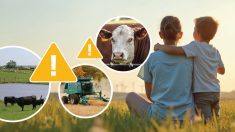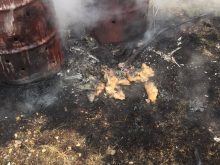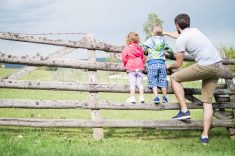Farmers need to be aware that even temporary workers are required to undergo a safety orientation, says Keystone Agricultural Producers safety consultant Morag Marjerison.
“I suspect a lot of our farm owners do not know that,” she said.
Safety legislation requiring orientation for new hires applies to all industries, including farms. But farmers may be unaware of those regulations, particularly when it comes to short-term harvest hires.
Read Also

Finally getting paid for sustainable farming?
Alberta project says they might have a line on a workable ecosystem credit model to reward farmers for sustainability, and Manitoba might be next
“People don’t necessarily think it through, but irrespective of whether they’re for half a day or not, it is still a requirement. And if it’s done correctly, it can help eliminate some of the incidents that take place.”
Under the Workplace Safety and Health Act, every employer is obliged to provide any new worker with a safety orientation.
“It is very prescriptive in the safety regulations as to what an orientation must include,” Marjerison said.
Essentially, the legislation aims to ensure that a new employee is made aware of any hazards they may encounter. It could be areas of the farm that are off limits, machinery they’ll be using, chemicals stored on site or precautions that must be taken.
They need to know things like the location of the first aid kit and who they are supposed to go to if they have a problem. They need to have appropriate safety equipment for the task involved (high-visibility vests, hearing protection, safety goggles, etc.). If they are expected to use machinery, there may be training requirements.
“We want them to be aware that if they’ve not been trained to drive that skid steer, they mustn’t just jump on it and move it because they think they know how,” said Marjerison.
Some training may be required to work around machinery, such as location of the emergency stop.
A new hire must also be told about their own rights and responsibilities under these regulations.
“They need to know that they have a right to refuse to do anything that they perceive is dangerous,” Marjerison said. “It’s fairly standard across any industry, but not necessarily standard knowledge for a farmer.”
One area of concern stems from the casual, neighbourly culture surrounding farm life. Often the neighbour’s kid or extended family members might come to help at harvest time. Even if those helpers are unpaid, they technically require an orientation.
“People don’t think of them as being employees,” says Marjerison. “But of course, they’re every bit as important whether they’re paid or not, and the legislation doesn’t require a person to be paid to deem them to be an employee.
“If they are doing work on your farm, they are an employee, even if you haven’t promised them anything in exchange for that work.”
Families working side by side with new hires on the farm add another wrinkle. Anyone raised on a farm has been warned about the importance of farm safety and is likely familiar with the machinery around them. They know the risks. Though it may seem counterintuitive, that could lead to a sense of complacency or overconfidence.
For those familiar with their surroundings, that might be fine but if the family is working with new hires, it can cause problems.
“It’s important to lead by example,” Marjerison said. “It’s no good telling your hired workers to do things a certain way but then they’re observing family members doing the complete opposite.”
Marjerison, who has a farming background, has seen things from both sides of the fence. She said incidents often occur during the mad rush to correct a problem and get things running again.
“Stuff goes wrong; it always does,” she said. “If we just stood back for a minute and thought about the problem, we’d make better choices as to what the corrective actions are. So, stand back for a minute and think through what you’re about to do.”
Marjerison’s contact information is available from the KAP website. She says farmers unclear about safety orientations are welcome to contact her. She will answer questions and can provide an example template.
















